11 Best first-time Europe itineraries for 1, 2, or 3 weeks
Europe is going to be very busy in the summer of 2024 as the world is back to normal and travel demand is higher than ever. One other key factor is that most European currencies are still hovering at lower levels historically compared to the US dollar, which means that Europe will feel somewhat cheap again this year. In fact, according to our World Backpacker Index, European cities like Lisbon, Madrid, and Munich are about 30% cheaper to visit than Boston, Chicago, and New York City. In other words, flying to Europe might seem expensive, but most things will be cheaper once you get there compared to the costs of visiting a large US city.
Below you’ll find 11 of the most popular and best itineraries for a first visit to Europe. Your first visit is not really the time to be different or creative, and the famous destinations tend to be popular for a reason. In other words, it’s kind of silly to visit, say, Bulgaria, if you’ve not yet been to France or Italy. I lay out the best options along with how long to stay in each place as a general guide. I also discuss Mediterranean cruises, which can actually be an amazing way to see a lot of Europe on your first visit, especially if you don’t like going back and forth to train stations and airports every 2 or 3 days.
For a bit of fun you might be interested in the cheapest 5-star hotels in Europe, which start at US$80 per night for really nice hotels. It helps show that if you choose some of the cheaper cities, you can treat yourself to some luxury that you can’t afford in most other places.
This article was last updated in March, 2024.
There are 11 starter itineraries described in detail below
- Classic London and Paris
- England and Scotland
- Paris and Italy
- Mediterranean cruise
- France, Belgium, and Netherlands
- Paris and elsewhere in France
- Italy
- Spain
- Germany
- Switzerland
- Best of cheap eastern Europe
For each itinerary there are suggestions of other destinations that are easy to add on to the main cities.
Note: This article was most recently updated in March, 2024
Building the best itinerary for your first trip to Europe
Below there are 11 popular itineraries for one week in Europe. If you’ve only got a week then choose one of them and assume you’ll return again to conquer more of this amazing part of the world. If you’ve got more time then you can choose from some of the top add-on suggestions for each one.
Start in the most famous cities
Your first visit to Europe is no time to try to be different or edgy. I recommend that you focus on these 5 great cities before you start branching out into cheaper or more obscure places.
Keep your travel days to a minimum
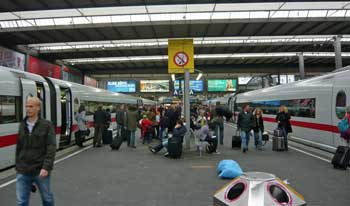
Spend 3 (or 4) nights in almost every major city
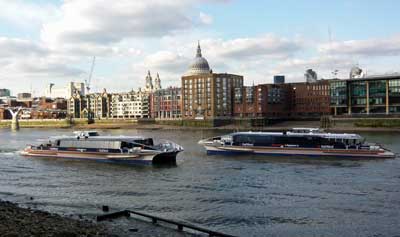
So many first-time visitors are initially planning on spending only 1 or 2 nights in major cities that I wrote a detailed explanation of why 3 nights is ideal for almost all European cities, even if you want to see as much as possible.
3 (or 4) nights will be enough for any city on your first trip
Most first-time visitors are tempted to move too quickly, but it can also be a mistake to move too slowly. It’s really amazing how much you can see in two full sightseeing days. If you spend too long in one city you’ll end up seeing things that are way down your list, while you could be in another city seeing things at the top of your list there.
Choose cities that are easy to reach from each other
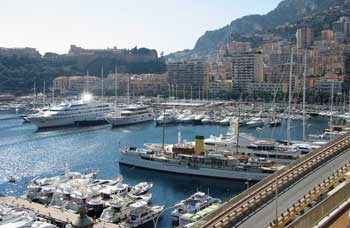
For your first trip it’s best to visit cities that are no more than a 5-hour train ride apart.
Choose cities that are connected by reasonable train rides rather than flights
To build on the point above, finding cheap flights within Europe is easy, but train travel is about a million times more enjoyable and less stressful. You’ll enjoy the train rides almost as much as the cities, so focus on places that are within 5 hours of each other by train.
Start with one of the classic itineraries below, and then add to it if you have more time
If you only have 7 days then you’ll find a list below of classic itineraries that are well-suited to a first visit to Europe. Hopefully you have more than 7 days though, and if you do you can add in one or more of the suggested add-on cities to build an itinerary that appeals most to you.
Best 1-week itineraries for the first time in Europe
Itinerary 1: Classic London and Paris
Fly into either city and take the 2-hour Eurostar train between them
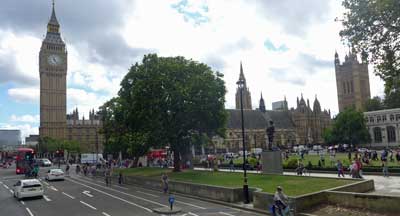
London highlights
- Big Ben and Parliament
- Westminster Abbey and St. Paul’s Cathedral
- Tower of London and Tower Bridge
- West End shows (Broadway equivalent) and classic pubs
- Buckingham Palace and Windsor Castle
Paris is actually far more beautiful than London and the food is famously much better as well. Since Paris gets so many tourists from non-French speaking countries, it’s easy to get by on just English, and the Metro system makes it fast and easy to get around. The architecture of both cities is amazing from the Tower of London, Big Ben, Westminster Abbey to the Louvre and the Eiffel Tower. These cities each pack a huge punch and they are very different from each other as well. Actually, England is arguably the best choice for your first trip to Europe.
Paris highlights
- Eiffel Tower
- Louvre Museum and Museum de Orsay
- Arc de Triomphe and other monuments
- Montmartre neighborhood and Sacré Coeur Cathedral
- Probably the world’s best affordable restaurants and wine
Best add-ons to London and Paris
- Edinburgh (2 or 3 nights, from London)
- Amsterdam (2 or 3 nights, from Paris)
- Bruges and Brussels (2 nights, from Paris)
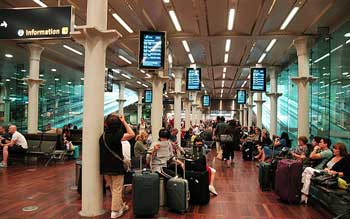
>>>Best one-week London and Paris itinerary in detail
>>>Check London hotel deals
>>>Check Paris hotel deals
Itinerary 2: England and Scotland
- London (3 or 4 nights)
- York (1 night)
- Edinburgh, Scotland (2 or 3 nights)
- Inverness, Scotland (2 or 3 nights)
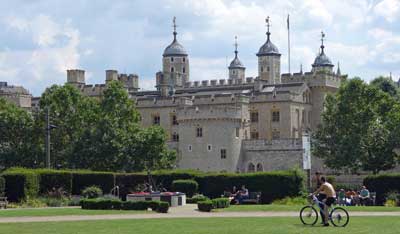
York is a small Roman city with intact city walls and one of the most famous cathedrals in Europe. Edinburgh is not only the capital of Scotland, but it’s easily the second most interesting city in all of Britain. If your time is short, skip York and spend more time in Edinburgh.
If you prefer to focus on the south of England on your first trip then the best option is to go to Bath or nearby Bristol after London. Bath is another of England’s top destinations and it’s a gorgeous city that has been a spa resort for many centuries. It’s also reasonably close to Stonehenge. You can also easily get to Cornwall in England’s southwest corner from Bath, and that’s a whole different and fascinating experience (with nicer weather than up north).
If you’ve got more than a week and want to spend more time in Scotland, especially in the summer months, the place to head to is Inverness. It’s a small town that is considered the gateway to the Scottish Highlands, but it’s an interesting and charming place on its own. You can take day-trips by bus to the highlights of the Highlands including the Isle of Skye and Loch Ness. Between you and me, it’s better to minimize time in Loch Ness or skip it altogether because it’s not one of the more photogenic parts of Scotland and the monster has always been a hoax.
Travel times between the recommended places
- London to York by train: 2 hours
- York to Edinburgh by train: 2.5 hours
- London to Edinburgh by train: 4 hours
- Edinburgh to Inverness by train: 3.5 hours
- London to Bath by train: 85 minutes
Best add-ons to England and Scotland
If you think you want to spend your whole trip in Britain you should have a look at our article on the best itineraries in England, Scotland, and Wales.
>>>Check London hotel deals
>>>Check Edinburgh hotel deals
Itinerary 3: Paris and Italy
- Paris (3 or 4 nights)
- Venice (1 night)
- Florence (2 or 3 nights)
- Rome (3 nights)
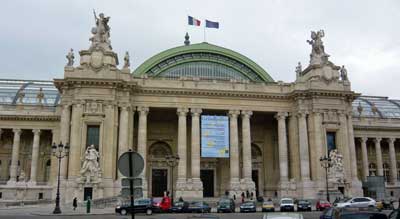
From Paris you can easily fly to Venice (or nearby Treviso) where you should try to spend about 24 hours. Venice is small enough to see in a full day, and so crowded that most people are satisfied to leave after that day. The key is to stay in the main part of the main island so you can enjoy Venice before the cruise passengers and day-trippers arrive, and also after they leave for the day. Two nights in Venice would not be wasted time, and it’s possibly the most gorgeous city in the entire world, but you can see the best of it in a bit over 24 hours.
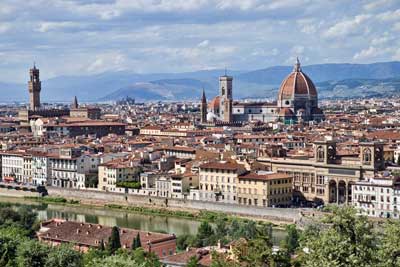
Rome also lives up to the hype and spending a day in the Vatican City will be a highlight even for non-Catholics, but it’s also a crowded and busy city so three days is usually enough for most people. Similar to Paris, Rome is an unusually beautiful city from almost any angle when you are in the historical center. You’ll walk through a stunning piazza (town square) and then turn a corner and you’ll see gorgeous buildings or public statues that are as nice as anything in the museums. Seriously, it’s worth a visit.
Paris to Venice flight: 1 hour 35 minutes
Venice to Florence by train: 1 hour 53 minutes
Florence to Rome by train: 1 hour 16 minutes
You can of course instead fly from Paris to Rome and then go north to Florence and then to Venice and fly home (or back to Paris) from there, and it would be just as enjoyable.
Best add-ons to Paris and Italy
France
- Nice/Cannes/Monaco (2 or 3 nights)
- Avignon (2 nights)
- Bourges (2 nights)
- Bordeaux (2 nights)
- Aix-en-Provence (2 nights)
- Reims (2 nights)
- Dijon/Burgundy (2 nights)
Italy
- Milan (1 or 2 nights)
- Lake Como (2 nights)
- Siena (2 nights)
- Cinque Terre (1 night)
- Naples/Sorrento/Amalfi Coast/Pompeii/Capri (3 to 5 nights)
- Sicily (3 to 4 nights)
>>>Much more information in this article about the best France and Italy itineraries
>>>Check Paris hotel deals
>>>Check Venice hotel deals
>>>Check Florence hotel deals
>>>Check Rome hotel deals
Itinerary 4: Mediterranean cruise
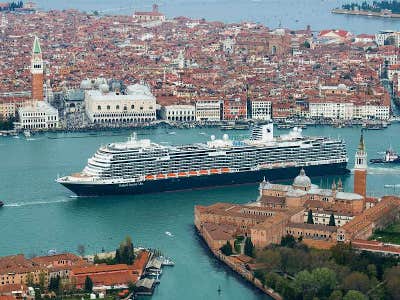
In spite of the reputation of cruises to be floating buffets, they can actually be an excellent way to visit a great number of amazing European cities in a short time. The ship typically is in port from the early morning until mid evening, often giving you the opportunity to have dinner in the city (unlike Caribbean cruises). Better still, the cruise ports are often near the center of town, so you can just walk off the ship and do sightseeing on foot or by public transportation.
Mediterranean cruises usually start at 7 nights but can go up to 3 weeks, which can provide an amazing tour of the entire region without having to pack and repack your bags more than once. They also can provide excellent value, especially compared to the price of taking trains or flights and finding new hotels in every destination.
Most popular Mediterranean departure ports
Barcelona, Spain – It’s an easy port to reach. Ships generally go from Barcelona with stops in France and then Italy.
Rome (Civitavecchia), Italy – The port isn’t very close to Rome, but it’s easy to get back and forth. Ships go west to France and Spain as well as south around the tip of Italy and then on to Croatia, Venice, and to Greece.
Venice, Italy – The cruise ships no longer dock close to the best tourist areas, but it’s easy enough to visit Venice for a day or two before boarding a ship. Ships starting in Venice go south and then head west and to Rome and then to France, or they go south to Croatia and then head east to Greece.
Athens, Greece – The cruise port of Piraeus is just south of Athens and easy to reach. Ships from Athens usually head west towards Croatia, Italy, France, and Spain, but there are also ships that visit Greek islands and Turkey.
>>>Check for deals on Mediterranean cruises
Alternative to consider: a river cruise
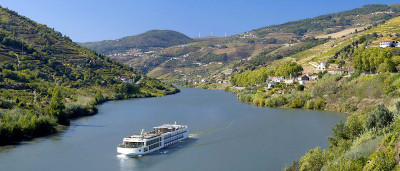
Amsterdam, Budapest, and Prague are some of the most popular river cruise ports, but there are dozens of others including many smaller towns in France where few other tourists will be when you stroll off the ship. There is little or no entertainment on the river cruise ships, but passengers don’t miss it because the entire day and into the evening is spent just steps from local cultural offerings and restaurants.
>>>Check for Europe and river cruise deals
Itinerary 5: France, Belgium, and Netherlands
Paris to Brussels: 1 hour 22 minutes
Brussels to Bruge: 58 minutes
Bruges to Amsterdam: 2 hours 45 minutes
Amsterdam to Paris: 3 hours 17 minutes
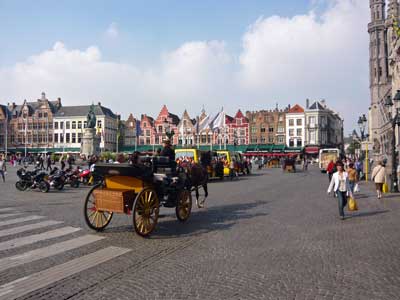
Spending 4 nights in Paris and 3 nights in Amsterdam would be a great trip, but if you want to see something else you’ve got a couple options in between. My advice is to spend an afternoon looking around the Grand Place (main square) in Brussels and then hop a 58-minute train ride to Bruges for a night or two. Brussels isn’t a great tourist city, but Bruges really is so it’s a better option for most people. Whatever you choose out of this group, you can be back in Paris on another high-speed train for your flight home.
Best add-ons to France, Belgium, and Netherlands
- Luxembourg City (1 or 2 nights)
- Cologne, Germany (1 or 2 nights)
- London (3 or 4 nights)
- Interlaken, Switzerland (2 or 3 nights)
>>>Check Paris hotel deals
>>>Check Bruges hotel deals
>>>Check Amsterdam hotel deals
Itinerary 6: Paris and elsewhere in France
- Paris (3 or 4 nights)
And a choice of:
- Nice/Cannes/Monaco (2 or 3 nights)
- Avignon (2 nights)
- Bourges (2 nights)
- Bordeaux (2 nights)
- Aix-en-Provence (2 nights)
- Reims (2 nights)
- Dijon/Burgundy (2 nights)
- Normandy (2 nights)
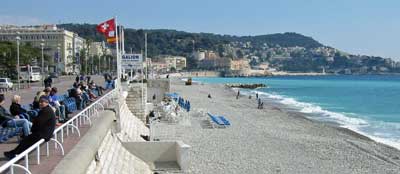
While Nice is a wonderful tourist city for a look at the French Riviera, the other larger cities of Lyon and Marseilles are probably better saved for a future trip because they are light on key sights compared to many smaller towns. Wine lovers can rent a car or take trains into Bordeaux or Burgundy. Since you can get between most of these towns by train in 2 hours or less, spending only 2 nights in each one is a reasonable option if you want to see a lot in a short time.
Normandy is an interesting choice and easy to reach in only about two hours by train from Paris. Some visitors like to see the famous WWII beaches and memorials, while others (especially in summer) like to check out one or more of the beach-resort towns. Deauville is one of the more famous of those, and it’s also famous for its horse race track and as one of the epicenters of the industry in Europe.
Best add-ons to Paris and elsewhere
- More France, of course
- London (3 or 4 nights)
- Interlaken, Switzerland (2 or 3 nights)
- Amsterdam (2 or 3 nights)
>>>Check Paris hotel deals
>>>Check Nice hotel deals
Itinerary 7: Italy
Rome to Florence: 1 hour 16 minutes
Florence to Venice: 1 hour 53 minutes
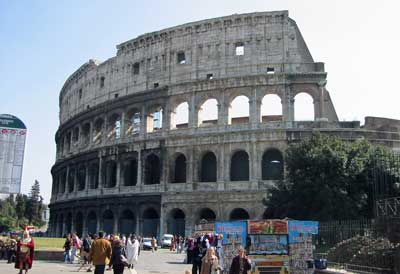
Venice is small enough that you can see the main sights in about 24 hours, and it’s so insanely crowded that many people tire of it after about a day as well. It’s better to pay more for a hotel to be on the main island and visit quickly than to save money with a hotel on the mainland where you’ll be in crowds going back and forth as well. Florence is the most relaxing of the 3, and also a great base for side trips to Pisa, Siena, and Cinque Terre, just to name a few.
Going to Italy? Here are the best first-time Italy itineraries for 3 days to 2 weeks (in much greater detail)
Best add-ons to Italy
- Milan (1 or 2 nights)
- Lake Como (2 nights)
- Siena (2 nights)
- Cinque Terre (1 night)
- Naples/Sorrento/Amalfi Coast/Pompeii/Capri (3 to 5 nights)
- Sicily (3 to 4 nights)
>>>Check Rome hotel deals
>>>Check Florence hotel deals
>>>Check Venice hotel deals
Itinerary 8: Spain
Madrid to Barcelona: 2 hours 30 minutes
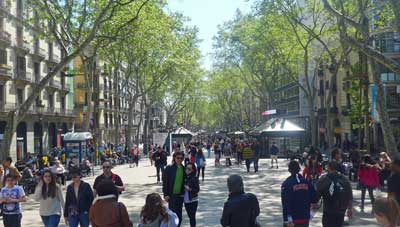
A huge part of Spain’s tourism industry is built around its southern beaches and islands such as Ibiza, Mallorca, and Tenerife (in the Canary Islands). For most people it’s best to ignore those places on your first trip because none of the beaches are special enough to spend days on them compared to the culture of the cities.
Best add-ons to Spain
By popular demand, I’ve added a full article on where to go in Spain with itineraries from 7 to 10 days up to two weeks.
>>>Check Madrid hotel deals
>>>Check Barcelona hotel deals
>>>Check Lisbon hotel deals
Itinerary 9: Germany
Berlin to Munich: 6 hours 2 minutes
Munich to Rothenburg ob der Tauber: 2 hours 56 minutes
Munich to Füssen: 2 hours 4 minutes
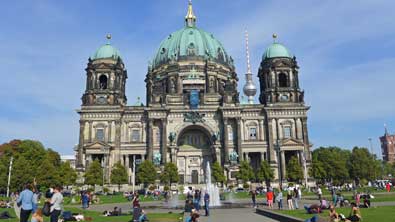
Those two cities are the keys to a Germany visit, and after that you’ve got a wide variety of choices. I cover most of the popular choices in my article on where to go in Germany, which covers several smaller towns that are major highlights.
Best add-ons to Germany
- Cologne (1 or 2 nights)
- Hamburg (2 or 3 nights)
- Amsterdam (3 nights)
- Prague (3 nights)
- Salzburg (2 or 3 nights)
- Vienna (3 nights)
- Interlaken, Switzerland (3 nights)
- Lucerne, Switzerland (2 or 3 nights)
>>>Check Berlin hotel deals
>>>Check Munich hotel deals
Itinerary 10: Switzerland
- Interlaken (3 nights)
- Bern (1 night)
- Lucerne (3 nights)
Zurich Airport to Interlaken: 2 hours 10 minutes
Interlaken to Bern: 53 minutes
Bern to Lucerne: 1 hour 50 minutes
Lucerne to Zurich Airport: 1 hour 3 minutes
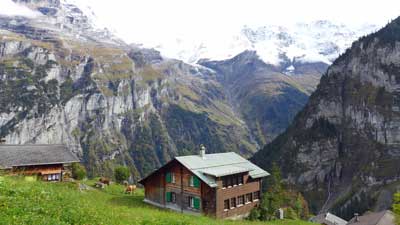
Interlaken is the best hub for the most dramatic Alps views and experiences. The one-hour cable car ride up to the Schilthorn observation deck is something you’ll never forget, and the only thing that might be more dramatic is the train ride up to the Jungfraujoch station, which is the highest in Europe. Lucerne is almost as beautiful with a scenic lake at its heart and also great mountaintop views nearby. If you do want to see a Swiss city then the capital of Bern is the most interesting and photogenic on a short visit. Read more about where to go in Switzerland for even more ideas.
Best add-ons to Switzerland
>>>Check Interlaken hotel deals
>>>Check Lucerne hotel deals
Itinerary 11: Eastern Europe’s best cheap cities
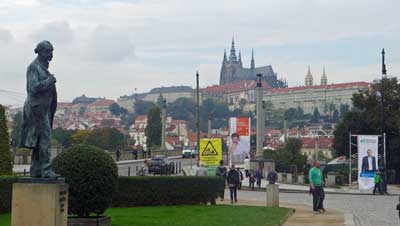
Each of these cities is beautiful and historic, but English is less widely spoken so they can also be quite a bit more challenging for a first-time visitor. Another difficulty is that the trains between them are still quite slow compared to the high-speed rail in the West, so it takes most of a day from one to another, and a bus is often a better choice. I cover this best cheap Europe itinerary more fully in the linked article.
Prague to Budapest: 6 hours 41 minutes
Budapest to Krakow: 9 hours 54 minutes (flying might be better)
Best add-ons to cheap Eastern Europe
- Cesky Krumlov, Czechia (2 nights)
- Ljubljana, Slovenia (2 or 3 nights)
- Split, Croatia (3 nights)
- Belgrade, Serbia (2 or 3 nights)
- Sarajevo, Bosnia and Herzegovina (2 or 3 nights)
- Sofia, Bulgaria (2 or 3 nights)
>>>Check Prague hotel deals
>>>Check Budapest hotel deals
>>>Check Krakow hotel deals


Hi Roger,
So we are a group of friends heading to Budapest-Salzburg-Vienna-Prague in mid June this year.
We are looking for ways in which we can commute to these cities? Either by rail or coach.
Can you shed some light on this?
Reliable websites we can use to book tickets? Preferred mode of transport?
Sakina,
For Salzburg and Vienna the train will be much faster than buses, but for the routes involving Prague and Budapest the bus service is usually about the same speed as the trains and it’s usually cheaper with more departure times. The buses in that area are reasonably comfortable and usually have free wifi, but the trains are definitely more comfortable because you get a larger seat and you can walk around if you like. In most of Europe trains are best and much faster, but since you are going between “Western” and “Eastern” Europe it can be a toss up.
Start by figuring out the order you want to visit them in and then check the train fares and schedules using the official rail service website for one of the countries involved. For example, this is the official Austria rail website and you can use it for any journey starting or ending in Austria.
Then Google for the bus service, like ‘Budapest to Prague bus’ and you’ll see the various companies and bus-booking websites. There are several new websites that sell bus tickets like this and as far as I know they are all reliable, at least the ones at the top of the search results. Whether it’s trains or buses you’ll usually get the best deals if you book at least a few weeks in advance. Bus and train fares on routes like these start low and go up as more seats are sold, so booking at the last minute is usually very expensive. Let me know if you have any other questions. -Roger
No worries Roger. Thanks a lot for your feedback.
Hi Roger, Probably you missed out my question. Please let me know your views. I have three days each at Belgium and Netherlands. Since you have mentioned that Brussels doesnt offer much as a tourist place, I was planning to make Ghent as my base and then cover Brugge and be back at Ghent. So my plan is to reach Brussels around mid day and then do the Square and bit of city on the foot otself. Later i would like to go to Ghent and explore Ghent for a day. Keeping Ghent as the base, would like to see Brugge and return to Ghent. From Ghent on the fourth day, would proceed to Amsterdam. So the idea to make Ghent as a base stems from the fact that it will be easier to cover Brugge, Brussels and then from there proceed to Amsterdam. Any thoughts on the same or any inputs ? What are your views for Ghent ?
Thanks so much in advance
Nawal,
Sorry about missing your previous question. Strangely enough, the system makes it obvious when it’s a question by a new person, but it can slip by when it’s a question from someone who has asked questions before because those questions post immediately and do not need to be moderated.
Your plan sounds fantastic, actually. Ghent is really a hidden gem because it’s quite similar to Bruges and even Amsterdam, but it gets far fewer tourists. It’s really beautiful in the center and I’m sure you’ll enjoy it a lot. I may start recommending this to other people since Bruges has become so popular and Ghent is actually quite similar. Have a great trip. -Roger
Hi Roger,
I am planning a trip to Europe for the first time with my wife and 2 year old daughter. I would like your advise on the best cities to visit on a 15 day trip.
I had Italy,France,Switzerland and Belgium in mind but i dont really know which will be the best among these if im travelling with an infant.
Also would appreciate if you could suggest any alternate options.
Thanks
Moiz,
Generally speaking, Europe is very child and family friendly so you can go almost anywhere and be fine. The one issue I’d think with traveling with an infant is that it’s probably best to avoid some of the hilly cities and some with cobblestone sidewalks because that can make pushing a stroller a bit of a pain. Venice is flat, but it’s got lots of stairs so I’d save that one for later.
With 15 days I’d choose 5 cities to visit, or perhaps only 3 or 4 because traveling from city to city with an infant and stroller can also be tiring. I think I’d start with 3 or 4 days in Paris. From there you could take a train to Brussels, Bruges, and/or Amsterdam, as all of them are almost totally flat and easy to get around in. Or you could take a train to Interlaken to see the best Alps scenery in Europe for a few days. Obviously Switzerland is anything but flat, but they’ve got cable cars and mountain trains and such, so it’s actually pretty easy to get around even with a stroller.
From either of those it’s probably best to fly from there to Rome and spend a total of 3 days there and 3 days in Florence. Rome is hilly in places, but it should still be pretty easy to get around. Florence is mostly flat and it’s very worthwhile since it’s the capital of Tuscany and one of Europe’s most historic and interesting cities.
Personally, I think Amsterdam is more interesting than Bruges or Brussels, so I’d recommend it. This should give you some ideas and hopefully you can choose what sounds best to you. I’m happy to help with more questions if you have them. -Roger
Hi Roger, Appreciate your views on my previous question
Hi Roger, I have three days each at Belgium and Netherlands. Since you have mentioned that Brussels doesnt offer much as a tourist place, I was planning to make Ghent as my base and then cover Brugge and be back at Ghent. So my plan is to reach Brussels around mid day and then do the Square and bit of city on the foot otself. Later i would like to go to Ghent and explore Ghent for a day. Keeping Ghent as the base, would like to see Brugge and return to Ghent. From Ghent on the fourth day, would proceed to Amsterdam. So the idea to make Ghent as a base stems from the fact that it will be easier to cover Brugge, Brussels and then from there proceed to Amsterdam. Any thoughts on the same or any inputs ? What are your views for Ghent ?
Thanks so much in advance
Hi Roger,
I read through most of your advises to a lot of people and I must say that a second pair of eyes does help when planning trips.
I am in Oregon, USA at this point and I plan to travel to Spain in July. I have to attend a wedding towards the end of the month in Barcelona. I am very confused on where to start the trip and make the most of it. I would have only a handy 8-10 days with me. Also, my fiance would be joining me from India. So, we also want some relaxing peaceful time for us and not rush through.
You mind sharing some ideas given our travel days.
Thanks much!
Ankita,
I’ll be happy to try to help. I’d definitely spend 3 nights in Barcelona and I’d also recommend 3 nights in Madrid. The cities are both very large and very different from each other. You can go between them on a high-speed train in about 3 hours, and it’s reasonably priced if you buy the tickets at least a month or so in advance.
For your other 3 to 4 days the best options are Seville, Granada, and Valencia, probably in that order. Again, each is quite different and those are all compact enough that you could enjoy them in 2 nights each and get between them by high speed train.
Barcelona and Valencia are both beach cities, so they will be really fun in July. Many people also go to the beach resort areas like the Costa del Sol and Costa Brava, but those are really more about relaxing and partying than about doing something interesting. In other words, you could go to similar beaches in Florida for a lot less.
Since you prefer to take it a bit easy I’d probably just choose Barcelona and Madrid and one other city. Seville is probably the most impressive, but Valencia is nice because it’s got a lot of beach and it’s less crowded than the others. I hope this helps. Let me know if you have any other questions. -Roger
Hi Roger,
We (my husband, my dad, my mother in law, my 8 month old daughter and me) are planning a trip to Europe in may. We have around 2 weeks. 1st week we have decided to be in Italy (thanks to ur article). I am confused about where to spend the 2nd week. this is a first time trip abroad for my dad and mother in law, and we are looking to celebrate our daughters first bday in a memorable country. And we have a budget as well 🙂
. So looking forward for ur suggestions. Husband and me have already been to London.
thanks Roger!
Avani,
If you are doing a week in Italy and have one more week to plan I’d definitely recommend Paris for 3 or 4 nights. Your best options with the other 3 or 4 days would be either to take a train from Italy to Nice to enjoy the French Riviera including day trips to nearby Monaco and Cannes, and then a train to Paris.
Or you could take an even shorter train ride through the stunning Alps from Venice or Milan to Interlaken and then spend 3 or so days there seeing Europe’s most amazing scenery before taking a train from there to Paris for your final days.
Of those two options Switzerland will be a bit more expensive, but it’s also more memorable. The month of May would be a great time to visit Nice though, since the weather will be nice and yet it won’t be nearly as crowded as it gets all summer. Let me know if you have any other questions. -Roger
Hi Roger,
My husband and I are planning a two week trip to Europe in August 2019. There is so much to see and I am at a loss where to start. We are wanting to visit family and friends in Scotland and Ireland and then perhaps go to Norway / Sweden / Iceland. Could you make any suggestions? We have been to Scotland before but not to any of the other countries.
Any insight would be appreciated .
Allison,
If you’ve got two weeks and it sounds like you’ll be spending one of those weeks in Scotland and Ireland, you’d probably only want to choose two other places. If you want to do Iceland I’d recommend spending at least 7 days there and splurging a bit on a rented car and a drive around the Ring Road, which I discuss in my main article on cheap Iceland travel tips. That could be a bit cheaper because it’s usually possible to get flights from the US to Europe with a free stop in Iceland going or coming back.
As for the others, I’d recommend about 3 nights in Bergen and 3 nights in Stockholm. Bergen is more interesting than Oslo, and it’s also the gateway to the Norwegian fjord region. Stockholm is a gorgeous city and all of those places will be really nice in August with good weather and very long days. Fortunately, you can usually get surprisingly cheap flights in the Nordic region, especially if you buy many months in advance.
Hotels in Bergen and Stockholm are quite expensive, but at least you get good quality. There will be plenty of 3-star and 4-star business hotels that should be reasonable because most business people in Europe are on vacation that month. Let me know if you have any other questions. -Roger
Hi Roger,
Your website is very informative. My husband and I are flying from India to Paris in July for two weeks, and have France and Belgium in mind. We would like to cover different landscapes across the countries and hence have drafted the following itinerary:
Paris- 4 nights
Brussels and Bruges- 2 nights
Lyon- 2 nights
Grenoble/ Annecy (french alps)- 2 nights
Nice- 2 nights
Bordeaux- 2 nights
Do you think this would be the best places to cover or should we concentrate less on France and explore other places? Our return flight is from Paris as well, and for inter-city journeys we plan to take trains.
Thanks!
Amy,
Your idea sounds great, but it looks like you might be too ambitious with how quickly you’ll be able to move around. There are high-speed trains between almost all of the places on your list, however, each one is at least a few hours apart by train. The problem with that is that you won’t be able to do much sightseeing on the travel days. I go over the reasons why in an article about why three nights is the best length of time to stay in European cities.
I think your two best options would be to either save Belgium for a future trip and use those two days in Nice and Bordeaux, or save Lyon for another trip and use those days for Nice and Bordeaux. France has really amazing diversity in scenery and you’ll be getting a really good picture of that with either itinerary. When locking in your itinerary it’s also important to check the train schedules to see how long each trip will be and make sure you are going in the most efficient order. Let me know if you have any other questions. -Roger